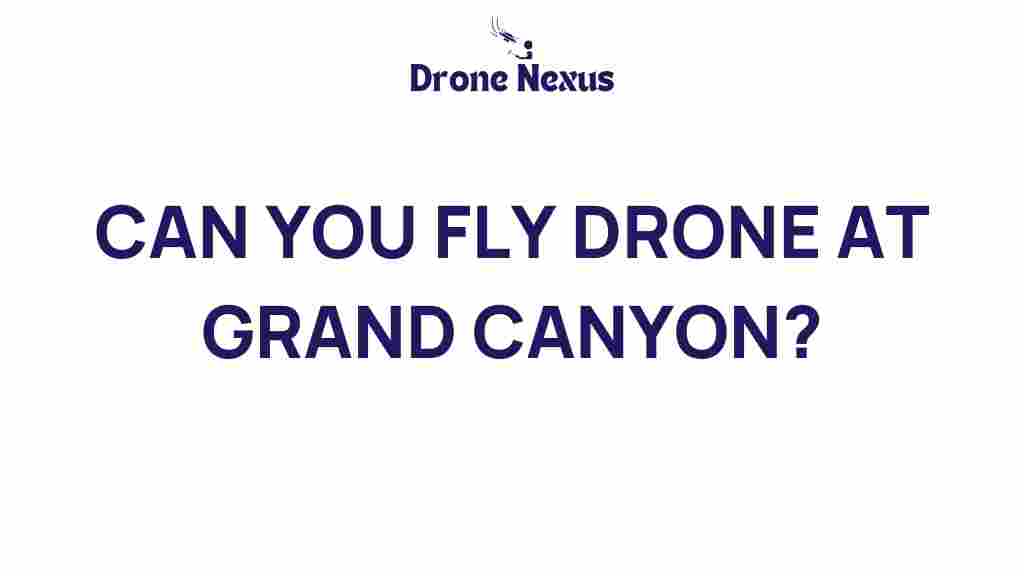Can You Fly a Drone at the Grand Canyon? Explore the Regulations
The Grand Canyon is one of the most breathtaking natural wonders in the world, attracting millions of visitors every year. With its stunning vistas and unique geological formations, it’s no wonder that drone enthusiasts are eager to capture the beauty of this iconic landscape from above. However, before you pack your drone gear and head to the Grand Canyon, it’s crucial to understand the regulations surrounding drone use in this national park. In this article, we’ll explore whether you can fly a drone at the Grand Canyon and the necessary regulations to adhere to for a safe and legal experience.
Understanding Drone Regulations at the Grand Canyon
Flying a drone in national parks, including the Grand Canyon, is subject to strict regulations. The National Park Service (NPS) has implemented these rules to protect wildlife, preserve the natural environment, and ensure visitor safety. Here are some key points to consider:
- Drone Usage Prohibited: As of now, flying drones for recreational purposes is prohibited in all national parks, including the Grand Canyon.
- Commercial Use: If you’re a commercial drone operator, you must apply for a special permit. This involves a stringent application process and adherence to specific guidelines.
- Safety First: Regardless of whether you’re flying recreationally or commercially, safety is paramount. Follow all FAA regulations and ensure that your drone is equipped with safety features.
Why Are Drones Banned in National Parks?
The ban on drones in national parks, including the Grand Canyon, is primarily due to the following reasons:
- Wildlife Disturbance: Drones can disturb wildlife, especially during sensitive breeding periods.
- Visitor Experience: The sounds and presence of drones can detract from the natural experience that visitors seek.
- Environmental Protection: Drones may pose risks to fragile ecosystems and landscapes.
Alternatives to Flying Drones at the Grand Canyon
While flying a drone at the Grand Canyon may not be permitted, there are several alternative ways to capture the stunning beauty of this natural wonder:
- Photography from Ground Level: There are numerous viewpoints and trails offering breathtaking views for photography.
- Helicopter Tours: Consider taking a helicopter tour for an aerial perspective without the hassles of drone regulations.
- Use of Licensed Drone Operators: Some companies offer professional drone photography services. This is a great option if you want aerial footage without the need for a personal drone.
Step-by-Step Process for Flying Drones Legally
If you’re a commercial operator looking to get your drone in the air legally at the Grand Canyon, follow this step-by-step process:
- Research Regulations: Start by familiarizing yourself with both NPS regulations and FAA guidelines concerning drone operation.
- Apply for a Permit: Visit the National Park Service website and complete the application form for a special use permit.
- Prepare Your Equipment: Ensure your drone is compliant with FAA standards and equipped with necessary safety features like GPS and return-to-home functionality.
- Plan Your Flight: Create a flight plan that minimizes disruption to wildlife and other visitors.
- Conduct a Pre-Flight Check: Before each flight, conduct a thorough pre-flight check of your drone’s systems.
- Follow All Guidelines: During the flight, adhere to all guidelines issued by the NPS and FAA.
Troubleshooting Tips for Drone Operators
Even with careful planning, issues can arise when flying drones. Here are some troubleshooting tips:
- Battery Life: Always check the battery life before launching. Bring extra batteries to avoid an emergency landing.
- Signal Loss: Familiarize yourself with your drone’s range and ensure you have a clear line of sight.
- GPS Issues: Ensure your drone has a strong GPS signal before takeoff. Avoid flying in areas with heavy tree cover.
- Weather Conditions: Always check weather conditions prior to flying. Wind, rain, and other elements can impact drone performance.
Conclusion: Enjoying the Grand Canyon Responsibly
While flying a drone at the Grand Canyon is currently prohibited for recreational users, understanding the regulations and options available for commercial operators is essential. By following the necessary steps and guidelines, you can ensure that your drone experience is both legal and respectful of the park’s natural beauty.
Remember, the Grand Canyon offers a plethora of stunning opportunities for photography and adventure without the need for a drone. Whether you choose to hike, take a guided tour, or simply enjoy the views from the rim, there are countless ways to appreciate this majestic landscape.
For more information on drone regulations in national parks, check out the National Park Service Drones page. If you’re interested in learning more about drone operation and safety, visit our Drone Safety Guidelines page.
This article is in the category Safety and created by DroneNexus Team
